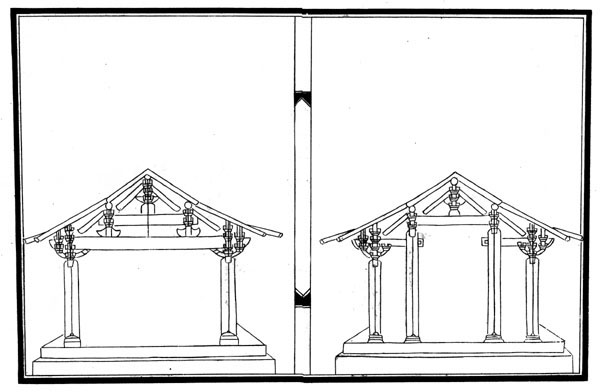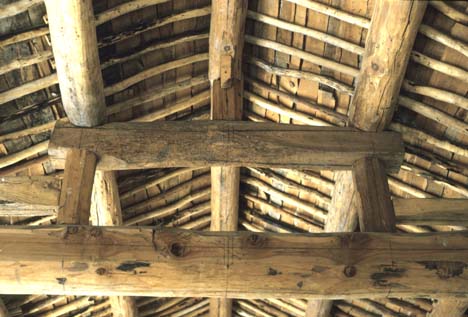|
|
|
|
The Chinese have developed a distinctive wooden framing system to
support the roof. Tile roofs are very heavy. Rather than bringing
all the weight down onto the walls, which is how the triangular truss
common in Western construction works, the system developed in China
distributes gravitational forces downward and then out through the
wooden frame. Two main kinds of framing systems developed: pillars-and-beams (tailiang), and pillars-and-transverse-tie-beams (chuandou). Examples of these framing systems can be seen below. The tailiang framing system is on the left, and the chuandou system is on the right. The main components are vertical pillars that begin at ground level,
short vertical supports called purlins, and horizontal beams connecting
the purlins. Can you identify these three basic components and determine their
function in the diagrams below? |
|
|
|
|
|
Diagrams of framing systems from a Song dynasty building manual
|



 Whereas
building rammed earth walls required little technical skill, carpenters
often needed to be called in to construct the framing system. To the
left, carpenters in the still relatively well-forested Sichuan
province work on a beam for wood framing.
Whereas
building rammed earth walls required little technical skill, carpenters
often needed to be called in to construct the framing system. To the
left, carpenters in the still relatively well-forested Sichuan
province work on a beam for wood framing.

 What
function do you think the corbelled bracket serves?
What
function do you think the corbelled bracket serves?